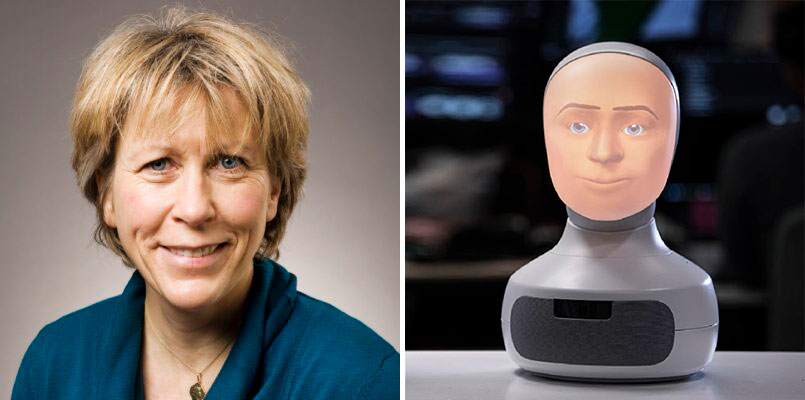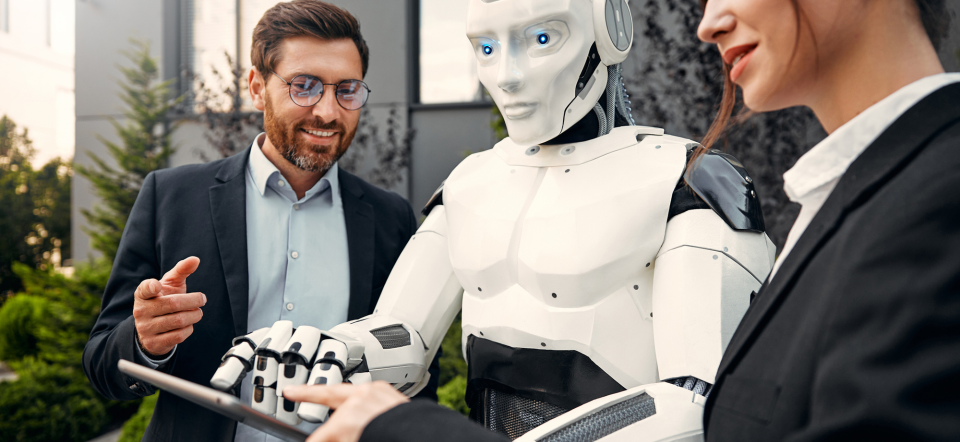Have you heard of a zoonoid robot? It looks like an animated character from a cartoon film, but in fact it is far from being confined to the world of fiction.
In many contexts, it can be used to fulfil social roles in society. This could be as a carer in a nursing home, hospital, receptionist, teacher or cleaner.
It can also be a great help in group processes to enhance creativity.
These are new results from the research project ‘Facilitation Robotics for Teams Foundational Research on Group Processes in Human-Robot Ensembles with Social Robots (S-FACTOR)’. Leading this interdisciplinary project is Johanna Seibt from Aarhus University.
The researchers have investigated how humans are affected by so-called social robots, which are characterised by human-like behaviour and developed by engineers to help us. "In the near future, there will be robots smart enough to fulfil several social roles in our society. But this is where our research project comes in, questioning what psychological and existential effects the interaction with robots has on us as individuals and as a society."
The robot's voice affects creativity
The first results from the project are ready and show what psychological effects robots have on group creativity.
“We investigated whether a robot could influence group creativity in the sense of whether the robot can help increase the production of more creative products. It can be difficult to define what creativity is exactly, but we could see that group creativity is influenced by first and foremost the presence of the robot, but especially by the way the robot talks.”
If a robot speaks with a very enthusiastic voice, it has a positive influence on how the group reacts,’ she says and adds:
“We know from management research that certain attitudes of leaders can increase employees' group creativity, and this is the same thing that happens with robots. Similarly, we know from research on human creativity that positive emotional support increases creativity. So again, if the robot is cheerful, enthusiastic and supportive, it can create a positive atmosphere that rubs off on the group members and improves creativity. Conversely, research shows that if the robot is negative and critical, it has a negative impact on the group's mood.”
Whether the robot has a male or female voice is not particularly important because it's not about the gender of the voice, but apparently the quality of the voice. Mechanical and monotone versus optimistic, friendly and enthusiastic is what matters.

Does the robot apologise?
The next thing the researchers looked at was how to establish trust from humans to a robot. Swedish researchers lead by Iolanda Leite from Kungliga Tekniska högskolan conducted a series of experiments that show something interesting.
“If a robot must explain why it has failed, is it best to apologise or pretend that nothing has happened? It turned out that an apology is more effective than an explanation, which is an interesting result. We don't care so much if the robot fails, we just want it to be polite.”
Japan's attitude towards robots is significantly different from Europe's
In the Nordic countries, as well as in other European countries, we have a different attitude towards what a robot is and what it should be used for than in Japan, for example. We don't generally consider machines to have a soul, and we see social robots as machines that simulate social behaviour.
The general public's acceptance of social robots in Japan is apparently much greater than in our part of the world. According to Japanese religious beliefs combined with the cultural mindset, it is humans who can give an object a soul. Therefore, in Japan, social robots are largely seen as helpers and in some cases even friends.
Robots can benefit the well-being of the Nordic population
Johanna Seibt explains that there are many ethical concerns, and the project asks questions such as: Is it undignified to interact with a robot? Is it a betrayal by the engineers who develop the robots and the policy makers who implement the robots in society? Do we really accept the use of social robots in human relationships?
When the project is finished, the researchers hope to help robot designers to produce ethically better robots and to think very carefully about the degree of sociomorphisation they want to generate in the robots. Sociomorphisation is a new term used by the research group. That is, to what extent should we humans perceive the robot as a social interaction partner and attribute mental and emotional characteristics to it.
As Johanna Seibt says, the goal is to produce knowledge that benefits the well-being of the Nordic population. Not least because we already use social robots today, especially in the healthcare system. And it's crucial that the project is interdisciplinary, she says:
“I believe that interdisciplinary research is the only responsible approach to human-robot interaction research. As researchers, we have an obligation to society to produce useful research results and in this field, that can only be achieved through interdisciplinary research. I would go so far as to say that publicly funded research projects that focus on human-robot interactions but are not interdisciplinary are an irresponsible use of public funds. That's a bit of a strong statement, but it's not clear that those projects will really serve the public good,” she says and continues:
“Social reality is the most complex research domain we know of. In comparison, the cosmos is easier to deal with, because there you have natural law. But social reality is incredibly complex, and therefore you need expertise from many different academic disciplines to capture that complexity or at least produce research that is more sensitive to that complexity.”






